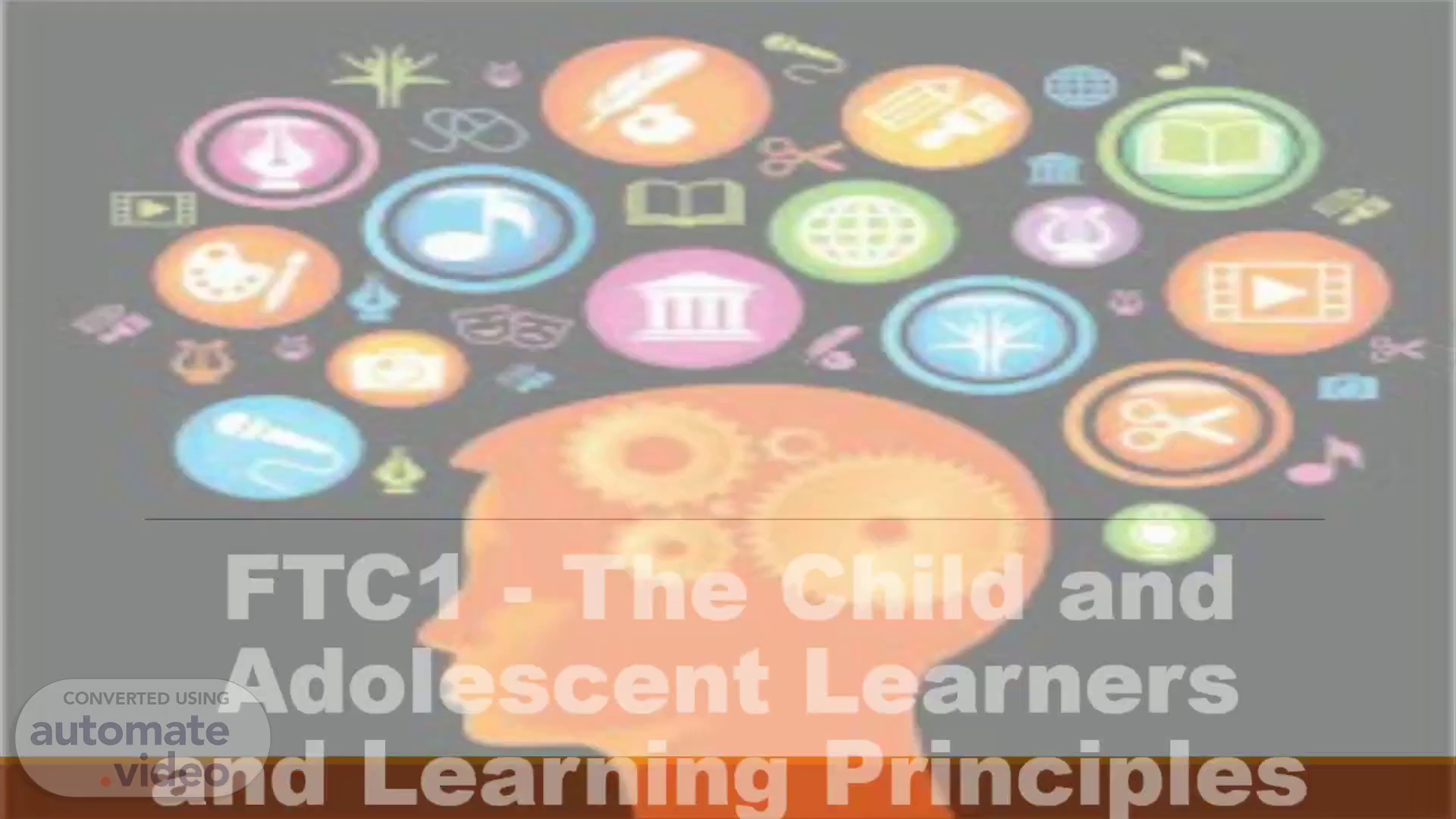
FTC1 - The Child and Adolescent Learners and Learning Principles
Scene 1 (0s)
FTC1 - The Child and Adolescent Learners and Learning Principles.
Scene 2 (7s)
University Vision. President Ramon Magsaysay State University as premier learner center and proactive university in a digital and global society..
Scene 3 (17s)
University Mission. The President Ramon Magsaysay State University shall primarily provide advance and higher professional, technical, special instructions in various disciplines; undertake research, extension, and income generation programs for sustainable development of Zambales, the region, and the country..
Scene 4 (31s)
Quality Policy. The President Ramon Magsaysay State University is committed to continually strive for excellence in instruction, research, extension and production to strengthen global competitiveness adhering to quality standards for the utmost satisfaction of its valued customers..
Scene 5 (45s)
FTC 1 - The Child and Adolescent Learners and Learning Principles.
Scene 6 (1m 11s)
Credit Units - 3 units (lecture). Contact Hours per Week - 3 hours lecture.
Scene 7 (1m 24s)
COURSE INTENDED LEARNING OUTCOMES (CILOs). By the end of the course, the students will be able to:.
Scene 8 (1m 43s)
COURSE INTENDED LEARNING OUTCOMES (CILOs). CILO 3 demonstrate understanding of pedagogical principles suited to diverse learners’ needs and experiences at different developmental levels;.
Scene 9 (1m 59s)
GRADING SYSTEM. Class Standing. Quizzes/Activities – 35%.
Scene 10 (2m 11s)
REFERENCES. 1. Corpuz, B.B., Lucas, M.R.D., Borabo, H.G.L., & Lucido, P.I. (2018) The Child and Adolescent Learners and Learning Principles. Lorimar Publishing, Inc, Quezon City, Philippines. Corpuz, B.B., Lucas, M.R.D., Borabo, H.G.L., & Lucido, P.I. (2015) Child and Adolescent Development. Lorimar Publishing, Inc, Quezon City, Philippines. 2. Lucas, Ma. Rita D. & Corpuz, Brenda B. (2014) Facilitating Learning: A metacognitive process. Lorimar Publishing, Inc, Quezon City, Philippines. 3. UN-OHCHR (n.d.) 1989 Convention on the Rights of the Child. UN Office of the High Commissioner for Human Rights. Retrieved from https://www.ohchr.org/Documents/ProfessionalInterest/crc.pdf 4. Presidential Decree No. 603 (1974) The Child and Youth Welfare Code of the Philippines. Retrieved from https:// www.pcw.gov.ph/law/presidential-decree-no-603.
Scene 11 (3m 0s)
REFERENCES. 5 . Republic Act No. 7610 (1992) Special Protection of Children Against Abuse, Exploitation and Discrimination Act. Available online: https://www.pcw.gov.ph/sites/default/files/documents/laws/republic_act_7610.pdf 6. Department Order No. 40, series of 2012 – Child Protection Policy. Available online: http://www.deped.gov.ph/wp-content/uploads/2012/05/ DO_s2012_40.pdf 7. Department of Education (2015) – Positive discipline in everyday teaching: A primer for Filipino teachers. Available online: https://bulacandeped.com/wp-content/uploads/2016/08/POSITIVE- DISCIPLINE-IN-EVERYDAY-TEACHING-A-Primer-for-Filipino-Teachers.pdf.